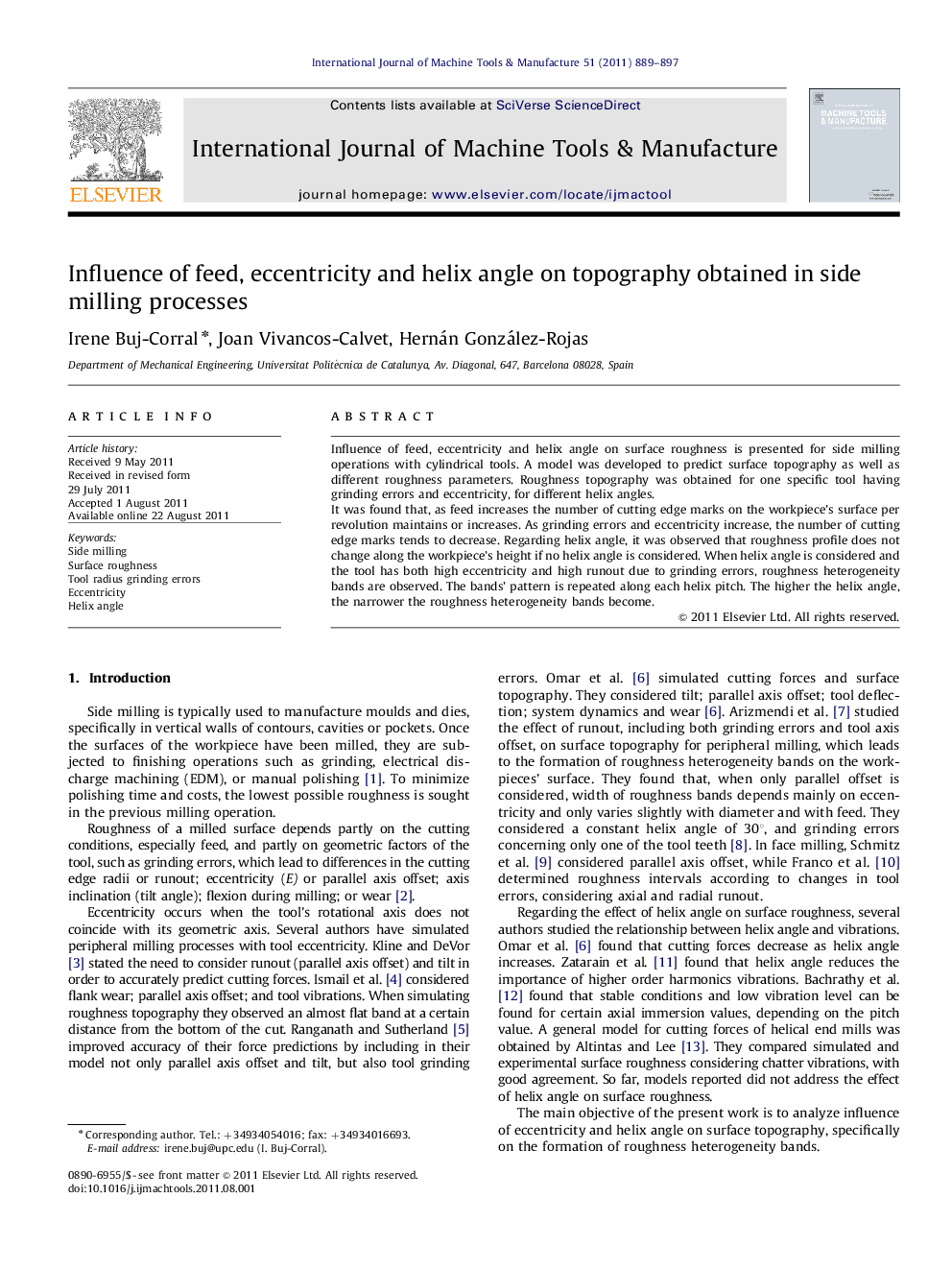| Article ID | Journal | Published Year | Pages | File Type |
|---|---|---|---|---|
| 780556 | International Journal of Machine Tools and Manufacture | 2011 | 9 Pages |
Influence of feed, eccentricity and helix angle on surface roughness is presented for side milling operations with cylindrical tools. A model was developed to predict surface topography as well as different roughness parameters. Roughness topography was obtained for one specific tool having grinding errors and eccentricity, for different helix angles.It was found that, as feed increases the number of cutting edge marks on the workpiece’s surface per revolution maintains or increases. As grinding errors and eccentricity increase, the number of cutting edge marks tends to decrease. Regarding helix angle, it was observed that roughness profile does not change along the workpiece’s height if no helix angle is considered. When helix angle is considered and the tool has both high eccentricity and high runout due to grinding errors, roughness heterogeneity bands are observed. The bands’ pattern is repeated along each helix pitch. The higher the helix angle, the narrower the roughness heterogeneity bands become.
► We model surface topography obtained in side milling. ► We analyze effect of eccentricity and helix angle on roughness heterogeneity bands. ► No bands are obtained if the tool has no eccentricity. ► Same number of roughness bands is obtained along the helix pitch. ► The higher the helix angle, the narrower the roughness bands are.
